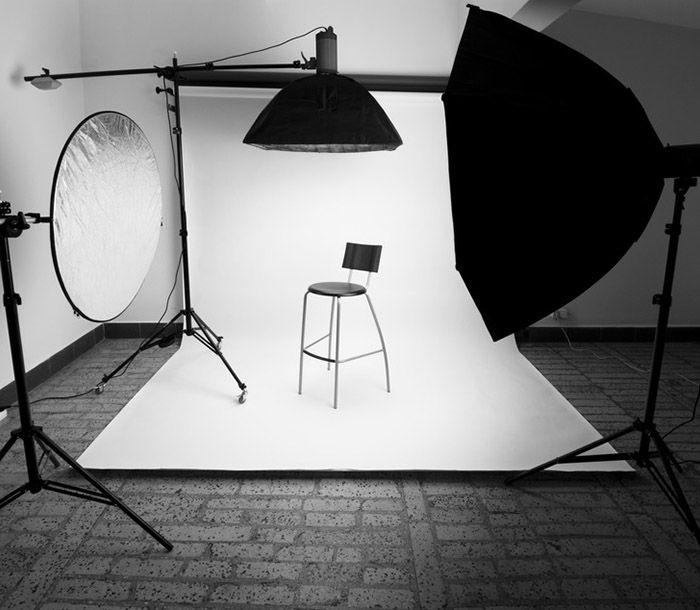From Ordinary to Extraordinary: How to Create Stunning Portraits with Studio Lighting

Creating professional-looking portraits is an art that requires skill, patience, and creativity. One of the essential factors in achieving great portrait photography is lighting. The right lighting setup can enhance the subject's features, mood, and overall feel of the photo. Studio lighting is a popular choice among photographers as it offers full control over the lighting conditions. In this blog post, we will provide you with a step-by-step guide on how to create professional-looking portraits with studio lighting.
Table of Contents:
I. Understanding Studio Lighting
II. Essential Equipment for Studio Lighting
III. Setting Up Your Studio Lighting
IV. Tips for Shooting Professional-Looking Portraits
V. Post-Processing Your Portrait Photos
Understanding Studio Lighting:
Studio lighting is a type of artificial lighting that photographers use to create specific lighting conditions in a studio setting. Unlike natural light, which can be unpredictable and inconsistent, studio lighting offers full control over the intensity, direction, and quality of light. This control allows photographers to create unique and professional-looking portraits with ease.
Essential Equipment for Studio Lighting:

To create professional-looking portraits with studio lighting, you will need the following equipment:
- Camera: A high-quality DSLR or mirrorless camera with a good sensor is ideal for portrait photography.
- Lighting Equipment: You will need at least two studio lights, light stands, and modifiers such as softboxes, umbrellas, or beauty dishes.
- Background: A clean and simple background can help emphasize the subject in the photo.
- Light Meter: A light meter can help you measure the light intensity and make precise adjustments to your lighting setup.
Setting Up Your Studio Lighting:

- Start by setting up your background and positioning your subject in front of it.
- Place your main light at a 45-degree angle to the subject, slightly above eye level.
- Place your fill light on the opposite side of the main light at a lower intensity to fill in the shadows.
- Use a hair light or backlight to create separation between the subject and the background.
- Adjust the position, intensity, and direction of your lights until you achieve the desired lighting conditions.
Tips for Shooting Professional-Looking Portraits:
- Communicate with your subject and direct them on how to pose and position themselves.
- Use a wide aperture to create a shallow depth of field and blur the background.
- Experiment with different lighting setups and angles to create unique and dynamic portraits.
- Use reflectors to bounce light onto the subject and fill in any shadows.
Post-Processing Your Portrait Photos:
Once you have captured your portrait photos, you can enhance them further by using photo editing software. Here are some tips for post-processing your portrait photos:
Adjust the exposure, contrast, and color balance to enhance the mood and feel of the photo.
Remove any blemishes or imperfections on the subject's skin using the healing tool.
Use dodge and burn tools to enhance the subject's features and create more depth.
Crop and straighten the photo to improve the composition.
Conclusion:
Creating professional-looking portraits with studio lighting is a rewarding experience that requires some skill and knowledge. With the right equipment, setup, and techniques, you can create stunning portraits that capture the subject's essence and personality. Use this guide to get started and experiment with different lighting setups to discover your own unique style.
FAQs
What is studio lighting, and how is it different from natural lighting?
Studio lighting refers to the artificial lighting equipment used in a studio setting to illuminate a subject. It is different from natural lighting because it is controlled by the photographer and can be manipulated to create the desired effect.
What are the essential studio lighting equipment that I need for portrait photography?
The essential studio lighting equipment for portrait photography includes a camera, a light source, a light stand, a reflector, and a diffuser.
What is the best type of light source for studio portrait photography?
The best type of light source for studio portrait photography is a softbox because it provides a soft, diffused light that is flattering to the subject.
How do I set up the studio lighting for a portrait photoshoot?
To set up the studio lighting for a portrait photoshoot, you need to position the light sources and adjust the distance, angle, and intensity of the light. You also need to use a reflector and diffuser to control the light and create the desired effect.
How many lights do I need for studio portrait photography?
The number of lights you need for studio portrait photography depends on the desired effect and the size of the subject. Generally, two lights are sufficient for most portraits.
What is the best camera setting for studio portrait photography?
The best camera settings for studio portrait photography include a low ISO, a wide aperture, and a fast shutter speed.
How do I pose the subject for a portrait photoshoot?
To pose the subject for a portrait photoshoot, you need to communicate with them, make them feel comfortable, and give them directions on how to stand or sit. You can also use props and backdrops to create a specific mood or theme.
What are the common mistakes to avoid when using studio lighting for portrait photography?
The common mistakes to avoid when using studio lighting for portrait photography include using too much or too little light, not using a reflector or diffuser, positioning the lights incorrectly, and not communicating with the subject.
How can I create a specific mood or theme with studio lighting for portrait photography?
To create a specific mood or theme with studio lighting for portrait photography, you can use different lighting techniques, such as high key, low key, or Rembrandt lighting. You can also use props and backdrops to enhance the effect.
How can I improve my studio lighting skills for portrait photography?
To improve your studio lighting skills for portrait photography, you need to practice regularly, experiment with different lighting setups and techniques, study the works of other photographers, and get feedback from others.

